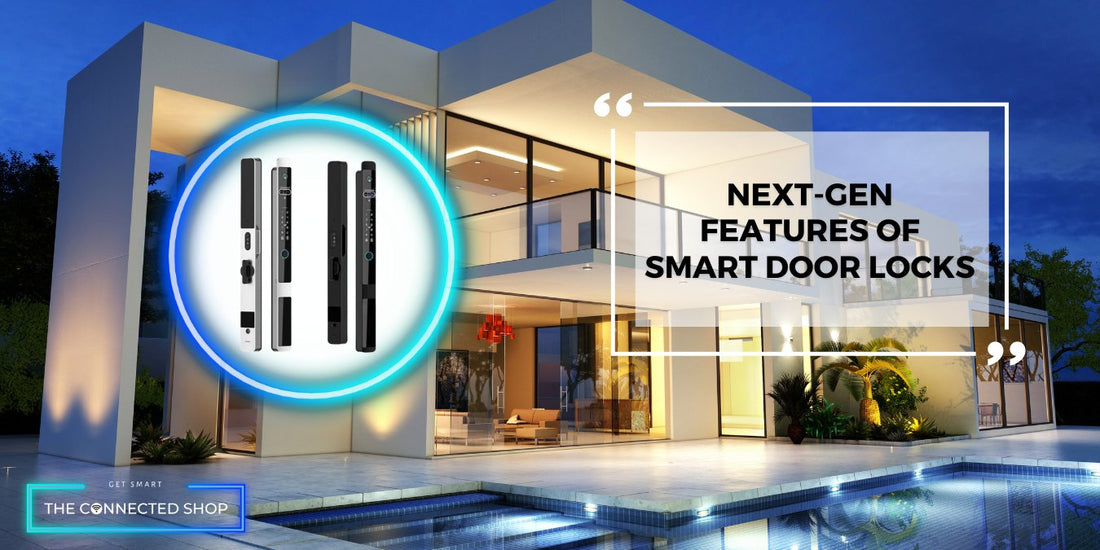As smart technology continues to advance, the evolution of smart door locks is set to transform the way we approach security. The convenience, enhanced safety, and seamless access control that smart door locks provide have already made a significant impact. However, the future holds even more sophisticated innovations. With developments in AI, biometrics, and integrated automation, the next generation of smart door locks will offer unprecedented features that further enhance security and user experience. This post will explore the emerging technologies and trends that will shape the future of smart door locks, providing valuable insights for homeowners, property managers, and businesses seeking the latest in access control solutions.
The Rise of Biometric Authentication: A Closer Look at Fingerprint, Facial Recognition, and Other Biometric Technologies Driving the Future of Smart Door Locks
As the demand for more secure, convenient access control continues to grow, biometric authentication is emerging as a key player in the next generation of smart door locks. Biometric technology offers a highly personalized and nearly foolproof solution for security, relying on unique physical traits like fingerprints and facial features to grant access. Unlike traditional keys or passcodes, which can be lost, stolen, or forgotten, biometrics provides a seamless and highly secure way to manage entry.
Fingerprint technology has become one of the most widely adopted biometric solutions, offering quick and reliable authentication. Modern fingerprint sensors are now more accurate and responsive, allowing users to unlock their doors with a simple touch. The convenience of this technology has made it a popular choice for residential and commercial smart door lock systems.
Meanwhile, facial recognition technology is rapidly advancing, making its way into smart door locks for both homes and businesses. By using cameras and AI algorithms to analyze facial features, facial recognition systems provide hands-free, touchless entry, which is particularly appealing in high-traffic environments where hygiene and speed are priorities.
Other biometric technologies, such as iris scanning and voice recognition, are also being explored as viable solutions for the future of smart door locks. These innovations offer an extra layer of security, ensuring that access is only granted to authorized individuals based on their unique physical characteristics.
The rise of biometric authentication is set to transform how we approach home and business security, providing both peace of mind and unparalleled convenience. As these technologies continue to evolve, they will play a critical role in the future of smart door locks, driving a shift toward more personalized, user-friendly access control solutions.
Energy Efficiency: Smart Door Locks with Low Power Consumption
One of the key ways smart door locks contribute to energy efficiency is through low-power consumption. Advances in battery technology and energy-efficient components allow smart door locks to operate for extended periods on minimal energy, reducing the need for frequent battery replacements. Many of today’s smart door locks are designed to operate for months or even years on a single set of batteries, making them both convenient and sustainable. Some models also offer smart energy management features, such as low-power modes that conserve energy when the device is not in use, further enhancing efficiency. Additionally, innovations like solar-powered smart door locks are emerging, allowing locks to harness renewable energy from the sun, reducing reliance on traditional power sources and contributing to a greener, more sustainable home ecosystem.
Sustainable Materials and Eco-Friendly Integration
In addition to energy efficiency, smart door lock manufacturers are adopting more sustainable practices by using recycled materials and reducing the environmental impact of the production process. These eco-friendly materials make smart door locks both durable and environmentally responsible. Beyond the materials, smart door locks are being integrated into smart home automation systems, enabling them to synchronize with other energy-efficient devices. For example, a smart door lock can trigger energy-saving actions like turning off lights or adjusting the thermostat when a door is locked. By connecting with broader energy management systems, smart door locks become part of a holistic approach to reducing energy consumption and fostering sustainable living.
Face-Controlled Access: The Future of Hands-Free Entry
As smart door lock technology advances, facial recognition is quickly becoming a key feature that enhances convenience and security. This cutting-edge technology allows users to unlock doors effortlessly, simply by having their face scanned, providing a truly hands-free experience. Facial recognition systems are designed to identify unique facial features, offering a fast and secure alternative to traditional methods like keys or keypads. As a result, entry becomes more seamless, particularly in busy or high-traffic environments where speed and hygiene are priorities.
In addition to facial recognition, many smart door locks also offer fingerprint, PIN code and remote unlocking options, ensuring that users have multiple layers of secure access. This multi-authentication approach offers flexibility for different users and scenarios, allowing you to choose the most convenient method at any given moment. A great example of this innovation is our Next Gen Smart Lock. It not only features advanced facial recognition technology but also includes a deadbolt auto-lock feature, which automatically secures the door after entry, further enhancing security without compromising convenience. Whether used in homes or businesses, the Next Gen Smart Lock exemplifies the future of smart door locks, where hands-free, multi-layered security is the new standard.
Conclusion
The future of smart door locks is set to bring about significant advancements in security and convenience. Biometric authentication, including fingerprint and facial recognition, is leading the way in providing secure, seamless entry options. At the same time, energy-efficient designs and sustainable materials are aligning smart door locks with the growing demand for environmentally responsible solutions. These innovations not only enhance security but also contribute to more efficient and eco-friendly living.
As technology continues to evolve, the next generation of smart door locks, like the Next Gen Smart Lock, will offer more advanced features such as facial recognition and automatic deadbolt locking, providing both homeowners and businesses with the enhanced safety and convenience they need. The future of access control lies in solutions that combine cutting-edge technology with sustainability, ensuring smarter, more efficient security for all.





